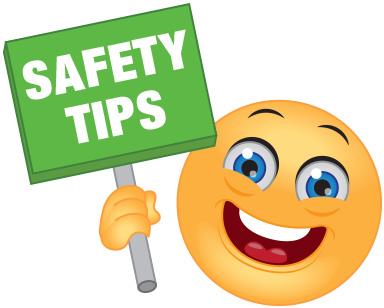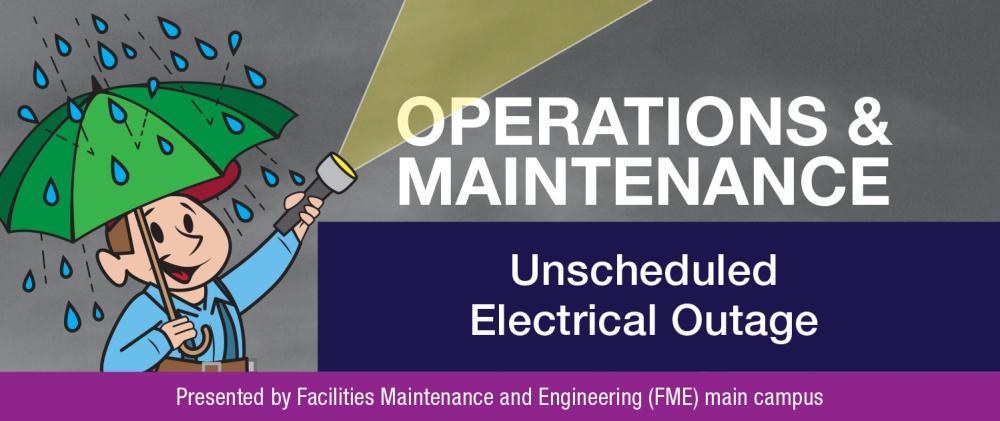 Occurring without notice, unscheduled utility outages (mainly electrical) are abrupt and create a nuisance. During an unscheduled electrical power outage, the Operations and Maintenance (O&M) department will monitor stand-by generators for proper operation. During the outage, the critical equipment identified for connection to the generator should be operating. These “loads” are evaluated for the safe operation of the generator and are used to calculate the generator run time. Please do not ask for extension cords during this type of outage; emergency outage procedures should already be in place. Additional loading of the generator without proper evaluation could jeopardize the generator and operation of the predetermined critical equipment.
Occurring without notice, unscheduled utility outages (mainly electrical) are abrupt and create a nuisance. During an unscheduled electrical power outage, the Operations and Maintenance (O&M) department will monitor stand-by generators for proper operation. During the outage, the critical equipment identified for connection to the generator should be operating. These “loads” are evaluated for the safe operation of the generator and are used to calculate the generator run time. Please do not ask for extension cords during this type of outage; emergency outage procedures should already be in place. Additional loading of the generator without proper evaluation could jeopardize the generator and operation of the predetermined critical equipment.
In an unscheduled power outage, all interior lights will go out except the emergency lighting system. Secure your work area; ensure that your refrigerator, freezer, and incubator doors are closed, and report to the designated gathering area outside of your building for further instructions. The emergency lighting will provide temporary lighting for your evacuation. Aisles, exits, and entrances are to be kept clear and unobstructed to avoid tripping and falling.
 Do not use elevators. Take the stairs instead. Passengers in elevators during a power outage should use the emergency phones, which are linked to Protective Services, to call for help. Do not attempt to climb out!
Do not use elevators. Take the stairs instead. Passengers in elevators during a power outage should use the emergency phones, which are linked to Protective Services, to call for help. Do not attempt to climb out!
At the return to “normal” electrical power, the O&M department will restore utility systems in a prioritized manner. Animal facilities have the highest priority to ensure the well-being and care of our animal population. Once the animal facilities are restarted and operating, the O&M department will focus on restarting the repository and laboratory buildings followed by the remaining administrative buildings.

Carbon Monoxide: The Invisible Killer
More than 400 Americans die from unintentional carbon monoxide poisoning every year, according to the Centers for Disease Control and Prevention. More than 20,000 visit the emergency room, and more than 4,000 others are hospitalized. Click this link for more home safety tips: https://www.nsc.org/home-safety/safety-topics/other-poisons/carbon-monoxide.
Click the following link for additional in-depth information about FME: https://ncifrederick.cancer.gov/services/fme
Contact the Help Desk
E-mail: fmetrbldsk@nih.gov
Phone: 301-846-1068



